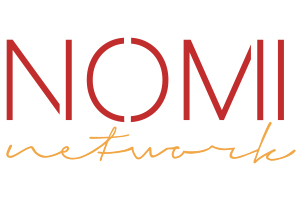What’s Your Slavery Footprint?

Nomi Network Advisory Board Member Justin Dillon and the staff at Slavery Footprint fuse creativity, technology and social media to mobilize consumers into action. Based in Oakland, California, Slavery Footprint’s mission is to invite consumers into an understanding of how their lives are connected to slavery and equip them with ways to transform the global marketplace. Slavery Footprint is also partnering with International Justice Mission (IJM) and the Polaris Project in a Google funded initiative to further the organizations’ collective missions of ending slavery. Slavery Footprint’s innovative “Free World” mobile app (available on iPhone and Android) and online action center provide an outlet to demand products “Made in a Free World.” While out shopping, individuals can use the app to send notes to brands asking them to check their supply chain for slavery, ‘recruit’ local businesses into the Made In A Free World network and drop facts for others to see. Engaging individuals, their networks and businesses in a conversation about making things in a free world, Slavery Footprint is working to end the most pervasive form of slavery in existence today. For more information go to www.slaveryfootprint.org.
We at Nomi Network are so honored to support Slavery Footprint’s initiative. This month, we have had the privilege of speaking with Slavery Footprint’s Director of Community Impact Fay Johnson to learn more about the app, her involvement, and the future of Slavery Footprint.
What is the mission of Slavery Footprint?
Slavery Footprint is working to end modern-day slavery, specificly labor slavery. By providing a way for individual to understand their connection to this issue, we hope to empower millions of people with the understanding that their voices matter and they can make a difference to end this atrocity.
What inspired Slavery Footprint to make the mobile application as a way to engage consumers?
We wanted to create a platform that allowes people to understand how their story and is connected to the stories of those living in slavery around the world. Abolitionists have always used the most modern communication devises of their time to educate and galvanize the public to action – the printing press, the radio, etc. Today, we can use the technology that is readily available to us to make our voices heard as we call for things Made In A Free World.
Fay, what is your role on the team? What motivates you to be involved in Slavery Footprint?
I am the Director of Community Impact which means I focus on our community engagement. I believe in what we are doing here at Slavery Footprint and I believe that we cannot solely focus on restorative care, we have to also work to prevent individuals from ending up in slavery in the first place. As a consumer, my consumption habits affect others and I want to leverage that influence to make a better world for all those in it – I am passionate about my job because I believe we all have that power. If we collectively work together we can change the system of how things are made.
How many consumers are currently using the mobile application?
Over two million visitors have been on the site. Over 500,000 people are actively participating. We have been blown away to see that people in over 150 countries that have found out how many slaves work for them. We have had quite a bit of activity in France, Brazil, Italy, India, Germany and the Netherlands.
How are stores and retailers taking action to change their sourcing of materials or the products they are selling because of the app?
Today, we are at the beginning of a journey – The individual actions that people take, sending letters to brands, help amplify the demand for things Made In A Free World. It’s an ongoing and important conversation between consumers and the brands that they purchase from. We are excited to see how companies respond, as they get a better understanding of how important this issue is to their customers.
Are there any new exciting developments with the app since the launch in 2011?
Yes! In the past few weeks we have released the 2.0 version of the Free World App and have added new features to our website. Many people have asked us, “what’s next?” and the follow up to knowing that there are slaves working to produce the things you buy is to take action to change the system which allows this to happen. With our new app and online action center, individuals can send letters to brands, fund frontline projects, plan events with their friends and form groups to track their progress.
Congratulations on your partnership with Google, International Justice Mission (IJM) and the Polaris Project! What role does each player play in this initiative?
Thank you. We are honored to work with such amazing organizations. As a staff we frequently comment on how amazing the IJM team is – they do great work from providing legal assistance to advocating on Capitol Hill. We feel the same way about the work that Polaris does on a domestic level. Particularly how well they are managing the National Hotline. Slavery Footprint hopes to bring new people into this movement by telling the story of slavery in a unique way, and will work to provide ways for people to leverage their purchasing power, time and their voice to end labor slavery.
What are the long-term goals for Slavery footprint?
Our goal is to show the demand in the marketplace for slave-free goods. We want companies to see that there are consumers that care about this issue. A new feature of the application is to say we would pay more for items such as soap and bread if they were known to be made without any slave labor. We are most excited about allowing people to raise the voice from the marketplace as actual consumers. It’s said that brands spend $27 per person on market research to learn what consumers want. The Free World app is a way to reach out to the company and tell them that you want to see an end to slavery and that you want them to share your values. For consumers to say they care about slavery and would pay more for an item if it is slave-free provides an incentive for companies to join the conversation of how they can more effectively audit the supply chain.
How can consumers make positive changes and get involved in fighting slavery?
First finding out how many slaves work for you. Then download the mobile. Third, share the story with friends and invite them to be part of the movement to end slavery. The more people that come into the conversation regardless of where they are living, the larger the impact it will have. It’s my goal to get my friends and family using the Free World app every day – I can touch the lives of people all around the world, just by using my phone to make my voice heard.
How could you see Nomi Network and Slavery Footprint working together in the future? And what can our supporters do to support Slavery Footprint?
We are all working towards the same goal – a better world where slavery and trafficking don’t exist. In addition to supporting survivors of trafficking, your network can engage their friends and family by inviting them to use Slavery Footprint. You can even form groups to keep each other accountable and track progress made. We hope that as we all work together, no one will ever have to face the brutality of slavery.
- Lisa Kim and Fay Johnson


Comments
Post a Comment